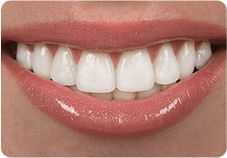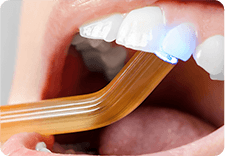Tooth whitening has become one of the most popular ways to improve your smile by lightening the existing shade of your natural teeth. This is a simple and effective treatment which can be carried out by your dentist or at home. Tooth whitening is non-invasive treatment which does not involve drilling or removal of the tooth surface.
There are many reasons why your teeth can become discoloured
• Drinking tea, coffee or red wine
• Food with strong colourings
• Smoking
• The natural act of ageing
• A tooth which is damaged by trauma
• Some teeth are naturally pigmented or stained as they develop
• Certain medications
Only natural teeth respond to tooth whitening, Crowns, Bridges, Dentures or Implants cannot be whitened.
More information
The outer surface of the tooth is called ‘Enamel’ this has tiny microscopic holes which trap everyday stains. Tooth whitening gel is a peroxide based compound which penetrates the holes removing the stains and lightening the teeth.
Your dentist will arrange for you to have a consultation appointment, where your teeth and gums will examined, you can then discuss which of the tooth whitening option would be best for you.
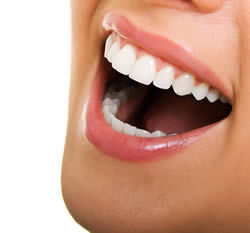
In Surgery Whitening
Whitening can be carried out in the surgery, this way your teeth will be several shades lighter in one to two hours. There are many methods used to achieve whiter teeth whilst in the dental chair, all the methods follow a similar procedure –
• Your gums will be protected using a rubber coating
• A Peroxide based gel will be applied to your teeth. The gel will begin to work upon contact with the tooth or will be activated using a laser light.
• After a period of time the gel and the protective coating are removed to reveal whiter teeth
Home Whitening
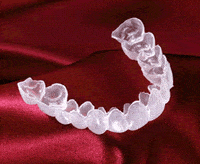
Your dentist will provide you with the whitening kit which contains Custom made whitening trays and a peroxide based gel. To have the trays made –
• Home whitening can take up to 14 days to achieve your desired shade.
• An impression (mould) is taken of your teeth using special dental “putty”. The putty is placed into an impression tray; they are both then inserted into your mouth and pushed onto your teeth in order to take an impression. Once the dental putty is set the impression will be removed.
• The moulds are sent to the Dental Laboratory where our technician will fabricate your custom made whitening trays.
• The peroxide gel is placed into your trays the tray is then placed onto your teeth for a period of time.
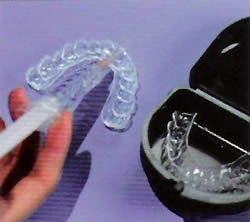
The degree of whitening will vary from patient to patient, greyer teeth can take longer to respond. Tooth whitening is not permanent; the whitening process will need to be repeated every 12 – 18 months to keep your teeth at the shade you desire.
Dental bonding, also known as composite bonding, has been used in dentistry for many years. It is an excellent way to repair cracked, chipped and discolored teeth as well as replacing silver amalgam fillings. Dental bonding can also be used to close gaps and reshape misaligned teeth, providing a straighter, more uniform smile.
Bonding is probably the most conservative of all the cosmetic dentistry. It involves minimum alteration to the original tooth enamel, and is reversible if none of the tooth enamel is removed. The results are seen immediately.
Bonding has been used for many years, bonding composite to teeth is a very popular option because the material used matches very closely to the shade of your natural teeth.
The Procedure
- A local anaesthetic will be given to numb the tooth and the surrounding tissue – not all bonding procedures require an injection.
- The tooth will be isolated from the rest of your teeth using a ‘rubber dam’ which is a thin sheet of rubber placed over your mouth. It is used to keep the tooth dry as saliva can compromise the bond of the composite.
- The tooth will be thoroughly cleaned. All decay, food debris or tartar will be removed.
- The tooth is prepared using a phosphoric-acid-based gel; this roughens the surface of the tooth. A bonding agent (glue) is applied to the roughened surface and set using a concentrated beam of ultraviolet light. The composite is then applied in layers and set at each stage using the ultraviolet light. The composite will be continued to be applied in layers until the desired shape is achieved.
- The last stage is to polish the restoration to achieve the final shape and smooth finish.
A veneer is a thin layer of tooth coloured material which is placed over your natural tooth to mask the underlying enamel.
Veneers are designed to enhance the appearance of your teeth by
- Masking permanently stained teeth.
- Closing Diastemas – spaces between your teeth.
- Straightening misaligned teeth.
- Improving the appearance of damaged or broken teeth due to decay or trauma.
The procedure is usually completed in two visits which is a simple and relatively quick route to improve your smile, the first part of the procedure involves the dentist removing a small amount of enamel from the front of your tooth and the second appointment the veneers are fitted into place.
Each veneer is individually handcrafted by our dental technician to correct the appearance of your teeth to create a healthy natural look.
The first part of the procedure will be a consultation appointment, this is when you can discuss with the dentist the concerns you have with your teeth and explain how you would like them improved.
Your dentist will have a ‘Diagnostic wax up’ made of your teeth to show how your teeth will look with veneers. This is a very simple procedure; the dentist will take impressions (mould) of your teeth and these will then be sent to the laboratory. Our technician will make a cast of your teeth using the supplied impressions (moulds). Dental wax is then applied to the cast, to show how the final veneers will look.
If you decide that veneers are for you, two appointments are then needed. The first appointment is when the dentist prepares the teeth and then a second is to fit the veneers.
The Preparation appointment
- The dentist will give you a local anaesthetic to numb the tooth and the surrounding gum.
- A small amount of tooth is removed from the front surface of your tooth to make room for the veneers. The dentist will do this using a fast hand drill.
- An impression (mould) is taken of your teeth using special dental “putty”. The putty is placed into an impression tray; they are both then inserted into your mouth and pushed onto your teeth in order to take an impression. Once the dental putty is set the impression will be removed. An impression is also taken of the opposing teeth, so the technician can see how you bite together.
- The dentist may fit temporary veneers to protect the teeth whilst your veneers are being fabricated.
- The impression (mould) of your teeth is sent to the Dental Laboratory where each veneer will be handcrafted to create your new smile. This process can take between two and three weeks.
The Fit Appointment
- Your temporary veneers will be removed and your teeth will be washed to remove any remaining cement.
- Your new veneers will be temporarily placed using a special paste which will allow the dentist to make any adjustments that are required and to make sure that you are happy with the appearance.
- The veneers will then be removed and the tooth surface prepared for the dental adhesive. The veneers will be permanently cemented in place to create the beautiful smile you have been waiting for.
Looking after your veneers
Veneers can last a long time but a lot depends on how you take care of them. You must maintain good oral hygiene brushing and flossing twice a day, also have 6 monthly examinations with your dentists.
Habits that damaged your natural teeth, like biting pens and pencils, opening bottle tops with your teeth and biting your nails will also damage your veneers.
“Any surgical or invasive procedure carries risks. Before proceeding, you should seek a second opinion from an appropriately qualified health practitioner.”
A crown is a tooth shaped cover which fits over the existing structure of your natural tooth to protect and restore the tooth’s function.
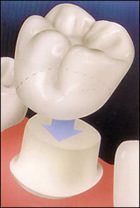
Crowns can be used to –
- Strengthen teeth which have been weakened by decay or a large filling.
- Protect fractured, cracked and worn teeth.
- Improve the shape, alignment and shade of a tooth.
- After root canal treatment, to help strengthen the tooth.
Each crown is individually handcrafted by our dental technician to create a healthy, natural look.
Crowns can be made using the following materials – all metal (often gold)or tooth coloured crowns such as porcelain fused to metal (often gold or a gold alloy), full ceramic (porcelain) or composite (plastic with glass particles embedded). The material used will depend on why you are having the crown.
Whether you choose to have a crown to improve the shape and alignment of your teeth or to strengthen your tooth, the procedure is the same.
Two appointments are necessary, the first to prepare the tooth for the crown and the second to fit the crown.
The preparation appointment
- A local anaesthetic may be need to numb the tooth and surrounding gum
- The dentist will then shape the outer surfaces of the tooth, creating a cylindrical shape onto which the crown will seat.
- An impression (mould) is taken of your teeth using special dental “putty”generally made from silicone. The putty is placed into an impression tray; they are both then inserted into your mouth and pushed over your teeth in order to take an impression. Once the dental putty is set, the impression will be removed. An impression is also taken of the opposing teeth, so the technician can see how you bite together
- A temporary crown will be cemented onto the prepared tooth to protect it whilst your crown is being fabricated.
- The impression will be sent to the Dental Laboratory where our technician will handcraft your crown. This will take between two and three weeks.
The “Fitting” Appointment
- A local anaesthetic may be need to numb the tooth and surrounding gum
- The temporary crown will be removed and the tooth will be washed to remove the temporary cement.
- The dentist will then try in your new crown, making sure that it fits correctly and that you are happy with the appearance.
The crown will then permanently cemented in place. The bite is checked carefully and may need minor adjustments.
“Any surgical or invasive procedure carries risks. Before proceeding, you should seek a second opinion from an appropriately qualified health practitioner.”
Invisalign is the modern way to get the beautiful straight teeth you’ve always wanted — without braces. Schedule a consultation with our team so we can determine if Invisalign is right for you.
What is it?
Invisalign uses a series of invisible, removable, and comfortable aligners that no one can tell you’re wearing. So, you can smile more during treatment as well as after. Invisalign is made with 3-D computer imaging technology and has been proven to be highly effective and accurate, especially for adults.
Why would I want it?
Not only are the aligners invisible, they are removable, so you can eat and drink what you want while in treatment. Plus, brushing and flossing are no problem. They are also comfortable, with no metal to cause mouth abrasions during treatment. No metal and wires usually means you spend less time in our practice getting adjustments. Invisalign also allows you to view your own virtual treatment plan when you start so you can see how your straight teeth will look when your treatment is complete.
How does it work?
You wear each set of aligners for about 2 weeks, removing them only to eat, drink, brush, and floss. As you replace each aligner with the next in the series, your teeth will move — little by little, week by week — until they have straightened to the final position we have prescribed. You’ll visit us about once every 6 weeks to ensure that your treatment is progressing as planned. Total treatment time averages 9-15 months and the average number of aligners worn during treatment is between 18 and 30, but both will vary from case to case.
“Any surgical or invasive procedure carries risks. Before proceeding, you should seek a second opinion from an appropriately qualified health practitioner.”

